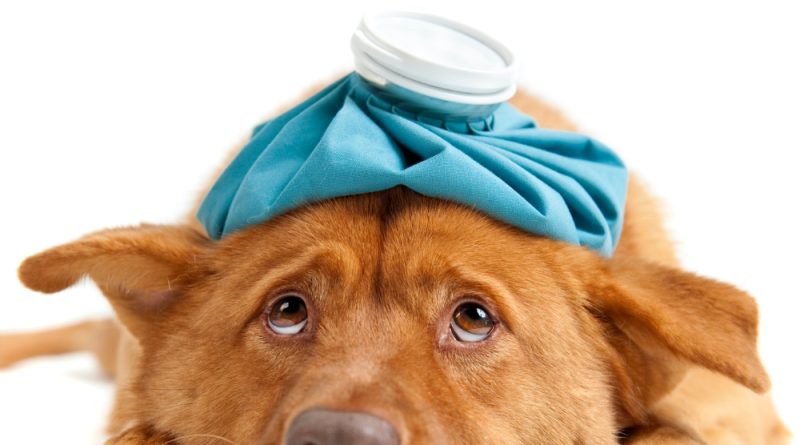How to make homemade electrolyte solution for dogs
Homemade electrolyte solution for dogs can be very useful in certain situations where the pet’s body loses a lot of fluids, such as when dogs are sick and experience vomiting or diarrhea.
This condition can put the animals’ lives at risk, especially if the body eliminates more than 10% of the body weight in water and minerals. Therefore, in cases of dehydration, homemade electrolyte solution for dogs is a strong ally to help alleviate symptoms.
It is essential to highlight that it does not replace, under any circumstances, veterinary care in more severe situations, but it can be very helpful in less complex cases. Below, understand everything about using electrolyte solution for dogs – from the homemade recipe to the causes of dehydration!
How to make homemade electrolyte solution for dogs? See the recipe!
You can find oral rehydration solutions at veterinary pharmacies and pet shops, but it is entirely possible to learn how to make electrolyte solution for dogs and prepare the recipe in a few minutes. See below how simple it is!
Homemade electrolyte solution recipe for dogs:
- 1 liter of mineral water;
- 3 tablespoons of sugar;
- 1 teaspoon of salt;
- 1/2 teaspoon of baking soda;
Juice of half a lemon.
How to prepare the electrolyte solution for dogs:
After gathering all the ingredients for the electrolyte solution for dogs, how to make the solution? The first step is to boil the water. As soon as it boils, turn off the heat and pour the liquid into a suitable container (cannot be plastic). Then add the other ingredients and mix everything with the help of a spoon. The electrolyte solution for dogs can be stored for up to 24 hours.
When can a dog take the homemade electrolyte solution?
The homemade electrolyte solution for dogs, made with ingredients that most people usually have on hand, is a resource indicated to alleviate the symptoms of mild dehydration and make your pet comfortable.
If the pet is reluctant and not drinking water for a long period, for example, the dog can take homemade electrolyte solution to meet its needs, as this helps replenish nutrients and minerals lost in case of vomiting and diarrhea. In a way, the electrolyte solution feeds the dog, preventing it from becoming malnourished.
On the other hand, if the clinical signs of dehydration are more severe, it is necessary to urgently seek the veterinarian, as it is not always possible to give homemade electrolyte solution to the dog.
In some cases, the administration of intravenous fluids and a slow electrolyte solution for 24 to 48 hours is essential, depending on the severity of dehydration, among other factors. Therefore, before offering homemade electrolyte solution for dogs – whether a puppy or an adult – it is essential to evaluate each case.
Can I give homemade electrolyte solution to my dog with diarrhea?
A dog with diarrhea can lose a lot of liquid, so rehydration is extremely necessary. In this situation, homemade electrolyte solution for a dog with diarrhea is indeed an excellent solution to try to improve your four-legged friend’s condition. The same goes for episodes of vomiting, as homemade electrolyte solution for a dog vomiting also relieves the symptom and helps replenish nutrients.
But beware: you should note that the upset stomach or vomiting is associated with other symptoms that may indicate something more serious. If this happens, do not waste time and take your pet to a veterinary clinic so that the professional can diagnose the underlying problem.
What is the best electrolyte solution for a dog?
Although many owners search the internet for how to make homemade electrolyte solution for a dog with diarrhea or vomiting, another possibility is to buy a saline solution for dogs at pharmacies. That’s right: if you’re wondering if “can I give pharmacy saline solution to a dog,” the answer is yes.
But what will be the best option for the pet? Well, there is no denying that preparing the solution is ideal, but the pharmacy saline solution for dogs is also an alternative for those who do not have all the ingredients at home or do not have time to prepare homemade electrolyte solution for dogs.
In any case, you won’t need to worry if it’s a case of mild dehydration. You can give saline solution to a dog, as well as you can learn how to make electrolyte solution for a dog with the recipe we provided above. Both options can help your friend in these moments.
How to give electrolyte solution to a dog, and what is the ideal amount?
Many owners wonder how to give homemade electrolyte solution to a dog, and the truth is that it’s not very mysterious. It is necessary to take into account mainly the size and weight of the animal, but you can give saline solution to a dog or homemade electrolyte solution in exactly the same way.
For cases of mild dehydration, just offer homemade electrolyte solution for a dog directly in the bowl. If he refuses to drink, use a spoon or a plastic syringe without a needle to administer the solution. Regarding the ideal amount at a time, follow this suggestion:
- 3 tablespoons (puppies);
- 4 to 5 tablespoons (animals up to 2.5 kg);
- 6 to 7 tablespoons (animals up to 5 kg);
- ¼ cup for every 2.5 kg of body weight (animals over 5 kg).
Main causes of dehydration in dogs
Now that you already know that “I can give homemade electrolyte solution to a dog,” you must be wondering how dehydration occurs in pets, right?
Well, the dog vomiting or with diarrhea are two symptoms frequently associated with various health problems, but they are also the main causes of dehydration in dogs. Animals can also lose fluids for the following reasons:
Diseases of the endocrine system, such as diabetes, hyperadrenocorticism, and Addison’s disease;
- Fever;
- Burns and severe skin wounds;
- Low water intake during the day;
- Prolonged and/or excessive effort activities;
- Heatstroke caused by very high temperatures;
- Kidney diseases.
How to know if my dog is dehydrated?
Dehydration is a potentially serious medical condition that does not always have thirst as a symptom.
Characteristic signs may include rapid weight loss, lack of appetite, weakness, dry and sticky gums, excessive drooling, “sunken” eyes, elevated heart rate, and panting. In many cases, pharmacy saline solution for dogs or homemade electrolyte solution are solutions that greatly improve the pet’s condition.
One way to know if your little dog is dehydrated is to gently lift a little skin on the back of the neck.
If it falls quickly, the animal is fine and does not need homemade electrolyte solution or medical help; if it stands up, like a “tent,” everything indicates that the animal has a low level of hydration. The more severe the dehydration, the longer it will take for the skin to return to normal.




